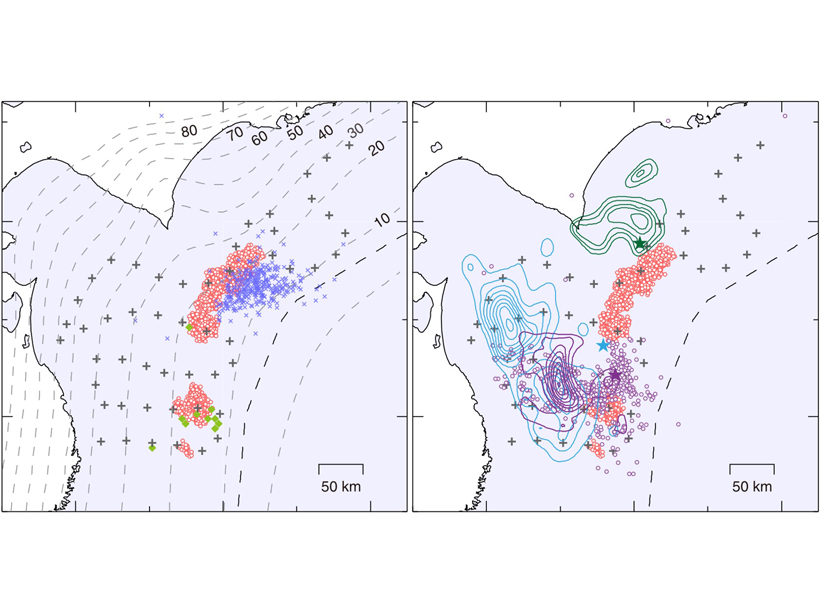Source: Geophysical Research Letters
Low frequency tremor is a newly discovered type of seismic activity indicative of slow slip of a fault, rather than the typical “fast” slip that occurs in regular earthquakes. While such activity has been discovered in many global subduction zones, it has yet to be identified in northern Japan.
Tanaka et al. [2019] report the discovery of shallow low-frequency tremors near the Japan Trench by using the newly installed seafloor seismic observation network (S-Net). They show that tremor activity in this region, co-located with low-frequency earthquakes, is distributed in two main clusters, separated by a gap where large earthquakes have nucleated and where aftershock activity of the 1994 Sanriku-Oki earthquake was also located. This indicates fairly rapid along-strike variations in the frictional properties of the shallow plate interface and helps us to better understand the driving mechanisms for both slow and regular earthquakes.
Citation: Tanaka, S., Matsuzawa, T., & Asano, Y. [2019]. Shallow low‐frequency tremor in the northern Japan Trench subduction zone. Geophysical Research Letters, 46. https://doi.org/10.1029/2019GL082817
—Gavin P. Hayes, Editor, Geophysical Research Letters
Text © 2019. The authors. CC BY-NC-ND 3.0
Except where otherwise noted, images are subject to copyright. Any reuse without express permission from the copyright owner is prohibited.

